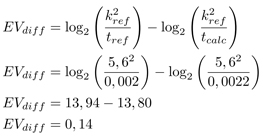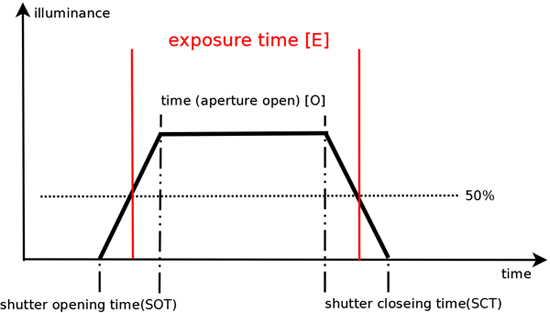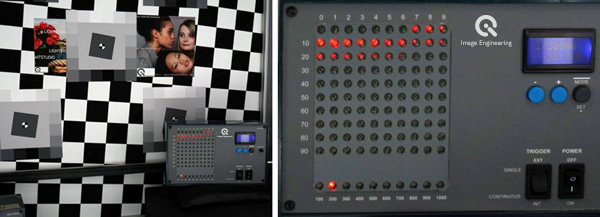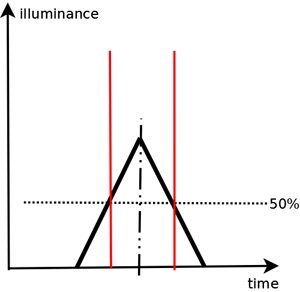The idea of shutter speed measurement is quite simple. If you want to know, how precise the shutter of your digital camera works, you can test it for example with an LED panel, which provides some LEDs flashing up at a certain frequency. If you capture an image of this device, you can count the LEDs in the image and multiply them with the LED frequency to get the exposure time. If you repeat this several times, you can see how accurate the shutter works.

If you capture ten images with an exposure time of 1/500 s (f5.6) and count the LEDs, you may get a result shown in fig 1. The frequency of each LED is 5kHz. The average value over ten images results in 11 LEDs, which leads to an exposure time of 0.022 s.
![]()
Converted in EV (exposure values) this would be a difference of +0.14 EV.

IN DETAIL MEASUREMENT
There is one thing you have to keep in mind if you measure the accuracy of shutter in this way: To be able to calculate the exact exposure time you have to know how long the shutter takes to open up. Fig 2. illustrates this problem.

The rising and trailing edge of the trapezoid show the opening and closing of the aperture. Depending on the intensity of the LEDs, it is possible that they appear in the image from the beginning of the opening process to the end of the closing process, but the actual exposure time will be measured at half distance of the edges (integration of the trapezoid area). Hence follows for exact results that we need to know the time the shutter needs for opening and closing.
Leaving this aside, you will get a high measurement error by testing short exposure times.
EXAMPLE
Imagine a camera with a central shutter, which needs 0.5 msec for opening/closing, then the shutter speed is 1/2000 s. With a LED frequency of 20 kHz you will obtain images as in fig. 3.

19 luminous red LEDs are counted, so the exposure time is:

The EV difference in this case is approximately +1 EV which would be very inaccurate!

Looking at Fig. 4 and remembering the shutter opening/closing time of 0.5 msec it is evident, that we have to subtract the latter time from the calculated time and the actual exposure time can be calculated:

In EV this would be a difference of -0,15 EV.
ck